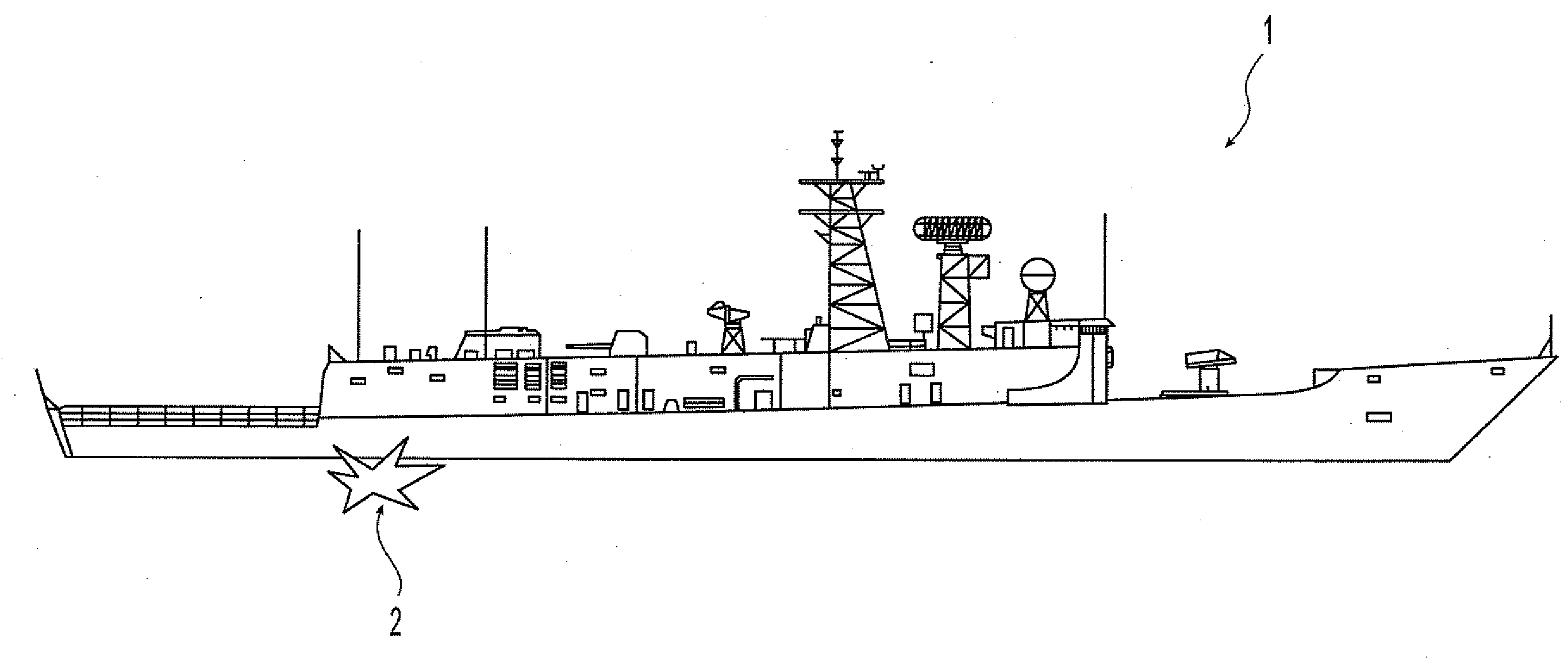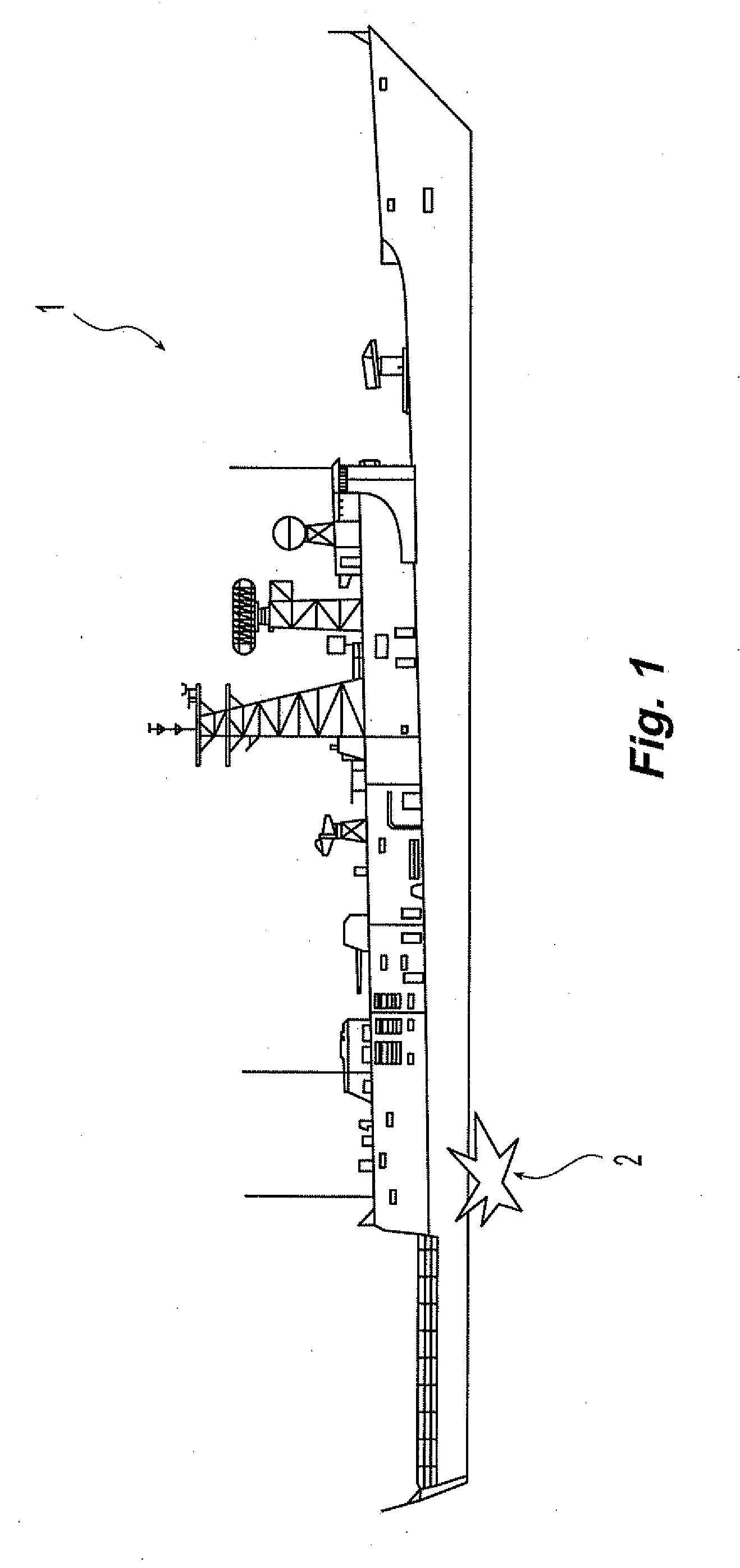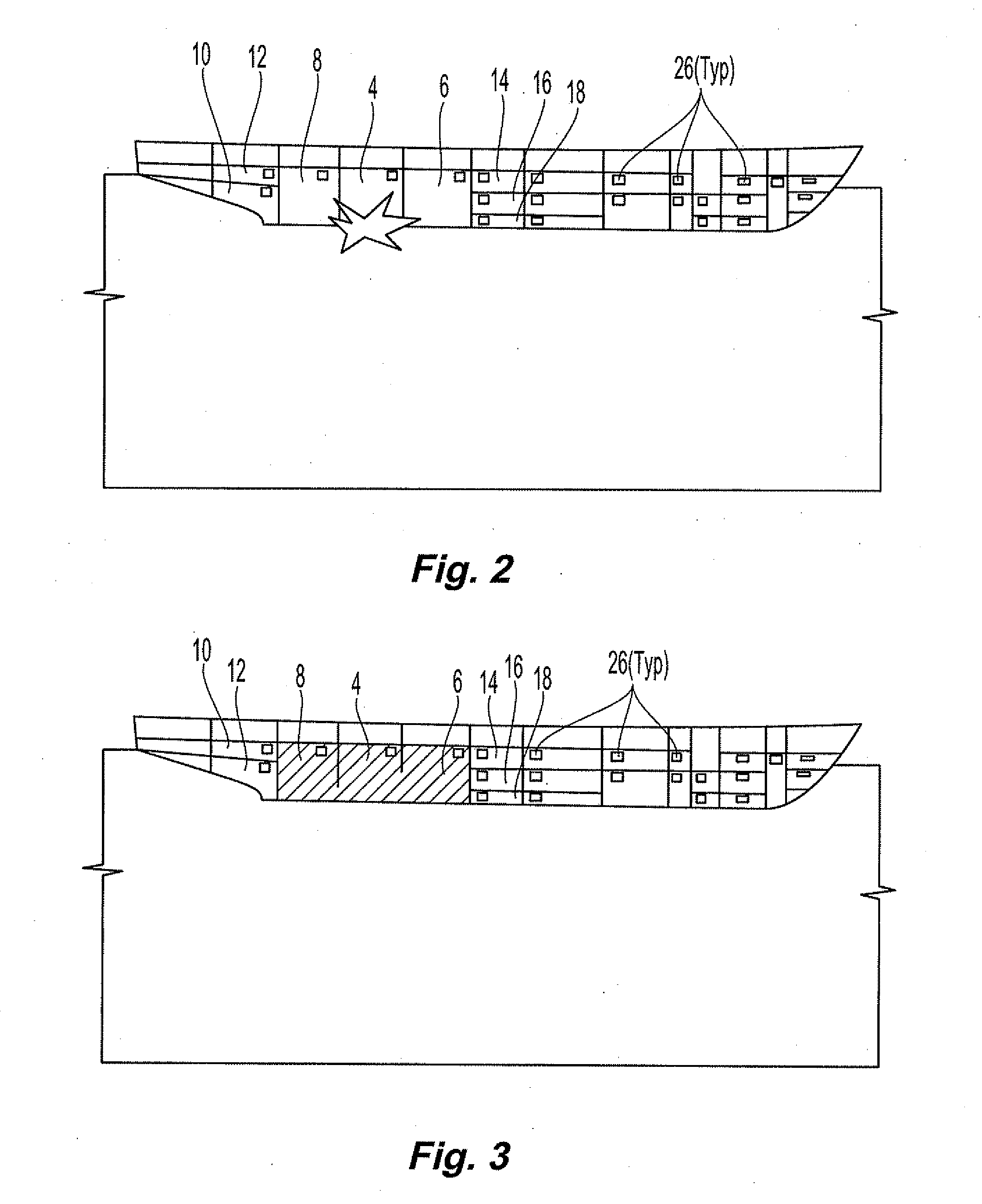Emergency buoyancy system
a buoyancy system and emergency technology, applied in waterborne vessels, special-purpose vessels, vehicles, etc., can solve the problems of little that can be done in the short term to counteract the damage level, distort the deck frame and bulkhead, and the hull of ships, so as to and increase the buoyancy of the vessel
- Summary
- Abstract
- Description
- Claims
- Application Information
AI Technical Summary
Benefits of technology
Problems solved by technology
Method used
Image
Examples
Embodiment Construction
[0017]A system is disclosed for use in an emergency for removing water from a damaged ship compartment (and / or preventing further ingress of water to a damaged compartment) to restore or maintain positive buoyancy of the ship. An enclosed flotation bag with an integral inflation system may be mounted to a bulkhead of one or more designated compartments in a ship. This inflation system may comprise compressed gas supplied from the ship's compressed air system, or it,may be supplied in individual cylinders. Alternatively, the gas may be locally generated by a hydrazine and calcium hydride-seawater reaction gas generating arrangement.
[0018]When a level of flooding in the affected compartment is detected, gas may be provided to the bag, causing it to expand to either push flooding water back out of the hole(s) in the compartment or to prevent additional flooding water from entering the compartment. Control of the gas supply may be manual or automatic, on-site or remote, and in one embod...
PUM
 Login to View More
Login to View More Abstract
Description
Claims
Application Information
 Login to View More
Login to View More - R&D
- Intellectual Property
- Life Sciences
- Materials
- Tech Scout
- Unparalleled Data Quality
- Higher Quality Content
- 60% Fewer Hallucinations
Browse by: Latest US Patents, China's latest patents, Technical Efficacy Thesaurus, Application Domain, Technology Topic, Popular Technical Reports.
© 2025 PatSnap. All rights reserved.Legal|Privacy policy|Modern Slavery Act Transparency Statement|Sitemap|About US| Contact US: help@patsnap.com



